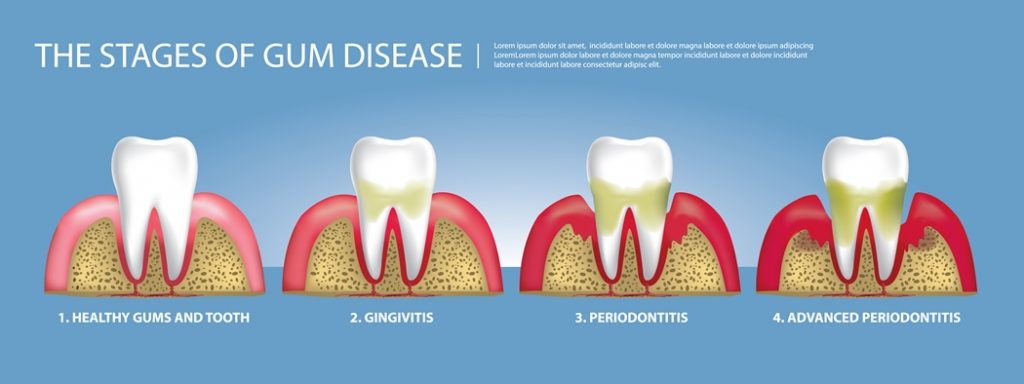What exactly is gum disease?
The earliest phase of gum disease is known as gingivitis which is actually the inflammation of those tissues that are supporting the teeth. The most typical cause of gingivitis is poor dental hygiene. Being quite common at present, gingivitis varies on a wide scale in severity. This condition is usually characterized by swollen and red gums which will bleed easily once you brush or floss your teeth.
However, one should not confuse between gingivitis and periodontitis. In fact, gingivitis always comes before the occurrence of periodontitis which is a more severe condition.

Gingivitis develops when the food we consume blends with bacteria and saliva that, in turn, produces dental plaque which sticks to the teeth surface. In case we do not get rid of dental plaque by brushing and flossing our teeth, it might form calculus or tartar in the long run. Being quite hard in nature, it is only possible for a professional dentist to remove tartar.
Both tartar, as well as dental plaque, is full of harmful bacteria which can cause gingivitis by irritating the gums if not removed on time. In case gingivitis is not treated properly, it can extend to the bone from the gums and can result in periodontitis.
There are several types of treatments for curing gum disease which will depend on the stage of the condition as well as your overall health. The nonsurgical treatments consist of professional dental cleaning as well as scaling and root planing. On the other hand, the surgical treatments comprise pocket reduction surgery or flap surgery, bone grafts, guided tissue regeneration, soft tissue grafts, as well as bone surgery.
Benefits of gum disease treatment
Now that we have got some idea regarding what exactly is gum disease, we will throw some light on the benefits of gum disease treatment at present.
- Help to prevent gum infections in the future
It does not matter whether you’re in need of periodontal surgery or deep cleaning, one of the most notable advantages provided by the treatment of gum disease is prevention. Your gums comes might have become infected as well as inflamed right now; however, following the treatment, there is less possibility for them to become infected once again.
- Provide a deep cleaning
For lots of patients who are suffering from gum disease, deep cleaning will be a significant form of treatment. During this process, your gums will be numbed by the application of a local anesthetic, and the dentist is going to clean your teeth comprehensively deep below your gum line. Removing all the inbuilt tartar and plaque will enable you to have healthy teeth and gums once again.
- Relieve you from discomfort
Gums which are infected are usually quite sore and tender. You might also feel it quite uncomfortable while brushing and flossing your teeth and this can make recovery quite difficult in the long run. However, you will get rid of these symptoms after undergoing proper gum disease treatment.
Who is it for?
Gum disease varies in severity from one individual to another and this condition is usually not perceptible until gingivitis has developed into periodontitis. This type of ailment typically affects individuals who are more than 30 years of age.
In case you’re having the following symptoms, then you should go for gum disease treatment without making any delay whatsoever.
- Tenderness or pain in the gums or teeth.
- Inflated gums or those that appear purple or red in color.
- An unpleasant taste in the mouth as well as persistent bad breath.
- The bleeding of your gums while you are brushing or flossing your teeth.